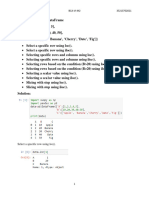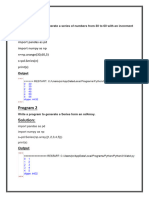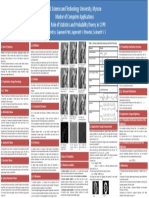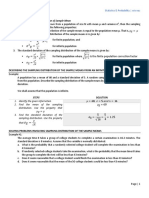0% found this document useful (0 votes)
6 views33 pagesSanyam Data Science
The document contains a series of Python code snippets demonstrating various operations using pandas and numpy libraries. It covers creating Series and DataFrames, performing statistical calculations, manipulating data, and visualizing results. Each section includes source code and expected output for tasks such as calculating mean, median, sorting, and generating plots.
Uploaded by
Nitin bhainsoraCopyright
© © All Rights Reserved
We take content rights seriously. If you suspect this is your content, claim it here.
Available Formats
Download as PDF, TXT or read online on Scribd
0% found this document useful (0 votes)
6 views33 pagesSanyam Data Science
The document contains a series of Python code snippets demonstrating various operations using pandas and numpy libraries. It covers creating Series and DataFrames, performing statistical calculations, manipulating data, and visualizing results. Each section includes source code and expected output for tasks such as calculating mean, median, sorting, and generating plots.
Uploaded by
Nitin bhainsoraCopyright
© © All Rights Reserved
We take content rights seriously. If you suspect this is your content, claim it here.
Available Formats
Download as PDF, TXT or read online on Scribd
/ 33
























































































